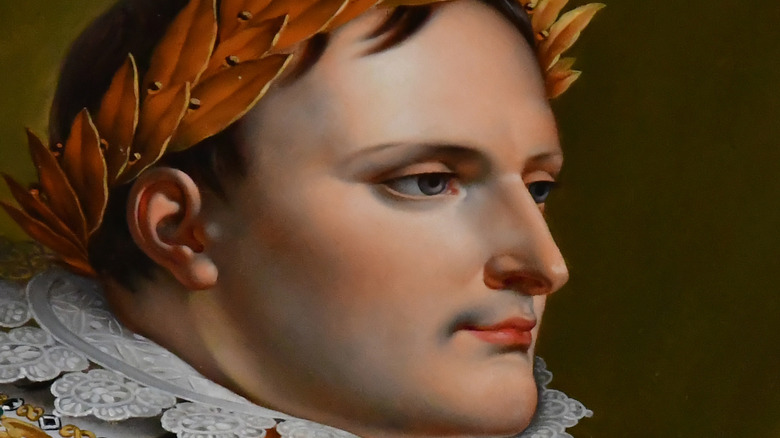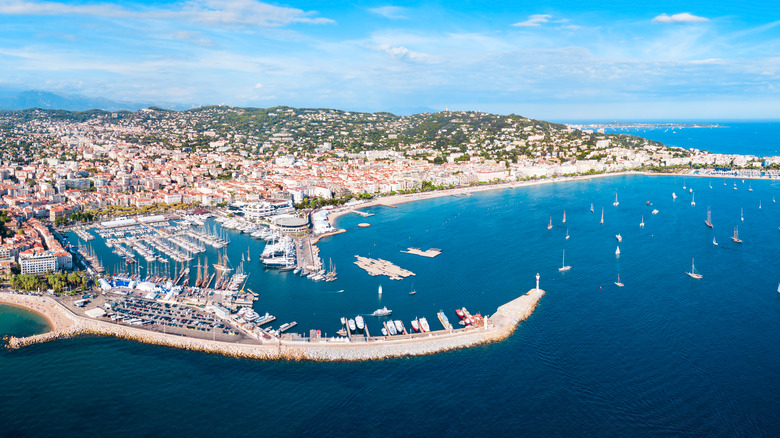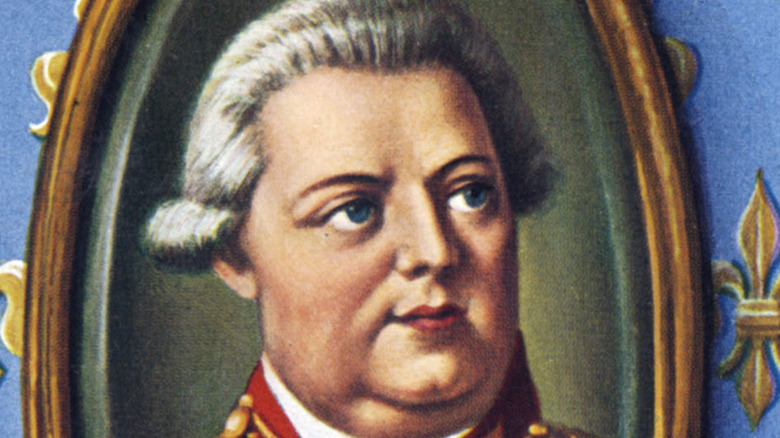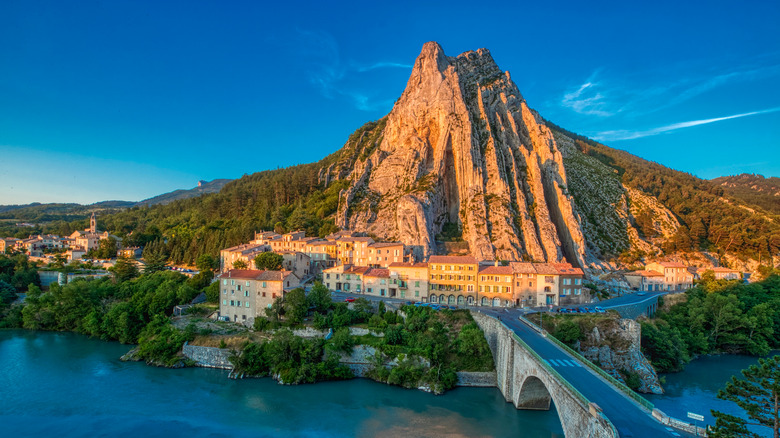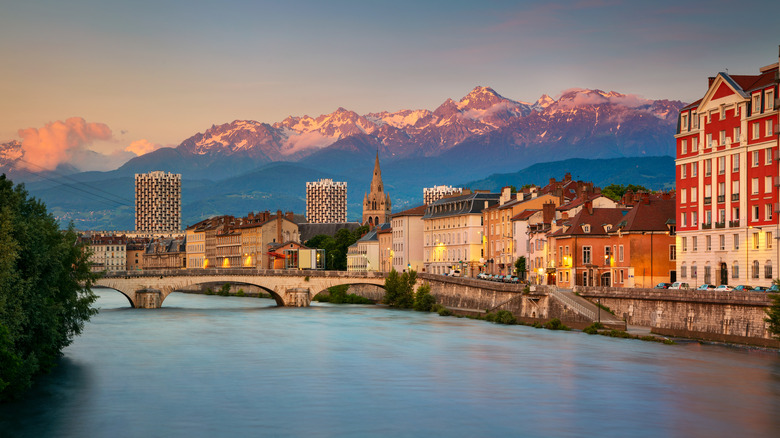The Truth About The Famous Route Napoleon In France
Ready to explore one of France's most famous paths? Start at the route traveled by one of the most notable French leaders ever: Napoleon Bonaparte.
Bonaparte was born in 1769 on Corsica, an island off the coast of Italy (via Brittanica). When he came of age, he joined the French military, and by the end of the 17th century he had become a respected military brigadier general and strategic leader. After marrying Joséphine Tascher de La Pagerie in 1796, he managed to lead French troops to victory against Italy, and by 1798, was leading France to battle against Egypt.
He then became the first consul of France after helping to establish a new government. His wide-ranging impact on the country included passing new laws, reforming education, and finally, declaring himself emperor in 1804 (via History).
But then, after years of success, events took a sharp turn for Bonaparte around 1814.
Army of supporters
After trying and failing to conquer Russia in 1812, Napoleon Bonaparte was forced to give up his emperorship, and was exiled to an island in the middle of the ocean (via History).
The story of Napoleon Bonaparte's route through France begins in 1815, when he ended a long journey in Golfe-Juan, reports BBC. He had just spent a year in exile on a small island in the Mediterranean, and he was low on cash and missing his family. So when he heard rumors that he might be banished to a different island in the middle of the ocean, Bonaparte decided to break out and head to France.
As Napoleon reports, he and a group of soldiers began a 200-mile long trek, which they finished in just under three weeks. According to BBC, Bonaparte gained a lot of support as he went, and he convinced many men to join him, building an army along the way.
Napoleon's surprise victory
By the time he reached the French capital, against incredibly slim odds, Napoleon Bonaparte was able to take control of the French capital after King Louis XVIII fled, History reports. This march has solidified a place in French history as one of the most impressive comebacks ever. When traveling the Route Napoleon, the path taken by he and his men, you'll discover a surprisingly beautiful and serene journey through some of France's most picturesque regions.
To begin the six or seven day walking journey along the Route Napoleon, according to Travel France Bucket List, people usually start in the town of Golfe-Juan. The route winds through the Alpes-de-Haute-Provence, reports Napoleon. The region has a colossal mountainscape to explore, with rivers, lakes, plains, and mountain peaks reaching heights of 10,000 feet.
The route is quite long, as BBC notes, and those who traverse it can choose from more than 40 towns and villages to explore along the way.
'Snapshot' of France
This route's official name is N85, and locals suggest the path is best explored on foot — just like Napoleon Bonaparte and his crew. But if you're short on time or want a relaxing drive instead, it takes roughly six hours by car (via TomTom).
One of the first stops along the route is Cannes, which you might know as the host of the annual Cannes Film Festival (via Conde Nast Traveler). The beloved seaside resort is also home to a medieval fortress at Musée de la Castre.
The route takes you through stunning French villages like Grasse, which is known for having sprawling picturesque lavender fields that spread the lavender scent for miles (via Travel Awaits). According to TomTom, Grasse is the world's capital of perfume. The mayor of Grasse, Jérôme Viaud, says, "There's no better way to get a snapshot of our fascinating but complex country, and I invite visitors to come experience it for themselves" (via BBC).
French town of ceramics
The Napoleon route then runs through Digne-les-Bains, which has a reputation as a spa town where people come to treat their respiratory problems (via Britannica).
According to Provence Web, the Alpes-Maritimes is another mountainous region to traverse along the path. It reportedly has excellent skiing conditions in the wintertime. Locals also enjoy rock climbing and water activities like boating and kayaking in the warmer months.
Napoleon and his men walked through the town of Sisteron, which has architecture dating back to the 12th century (via Avignon et Provence). Visitors can explore cafes and shops along the Durance river, and the town's citadel is a major tourist destination.
The coastal path then cuts through Vallauris, where famous artists like Pablo Picasso were known to vacation (via Video Turysta). The region is sometimes called the "French town of ceramics." Local shops specialize in cooking pottery and artistic ceramics, with lots of colorful Picasso-inspired works of art lining the streets.
End of Napoleon's journey
Your journey will end in the town of Grenoble, which is also the capital of the French Alpes, according to Travel France Bucket List. On March 7, 1815, Napoleon and his men arrived in the town after completing the 200-mile walk (via Napoleon). They stayed in the Hôtel des Trois Dauphins, a building that now operates as a hotel and restaurant called the Hotel Napoleon (via Trip Advisor).
Interestingly, unlike a lot of tourist destinations that suffered during Covid-19 lockdowns, this outdoor route has drawn a lot of visitors (via BBC). The towns along the way have seen a massive increase in tourist activity as people explore the great outdoors.
As BBC reports, one mountain guide, Andrea Bacher, remarked that the Napoleon path has a lot to offer. "I've been working here for more than 30 years," she said, "and I still discover something new each time I head out. The natural landscape is especially rich, and because a lot of this terrain is difficult to access, many things haven't really changed in thousands of years."
